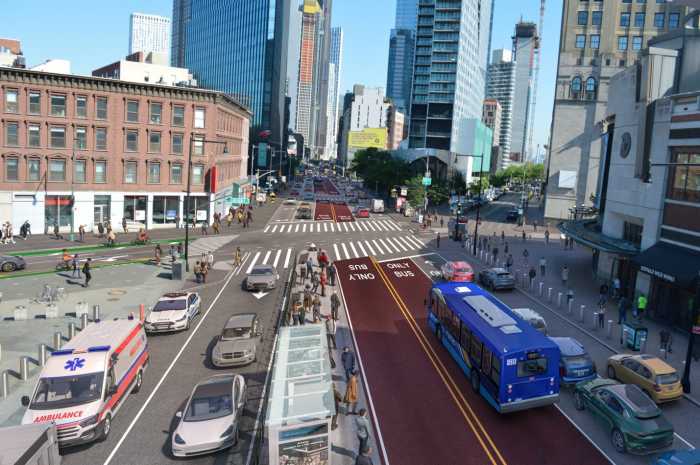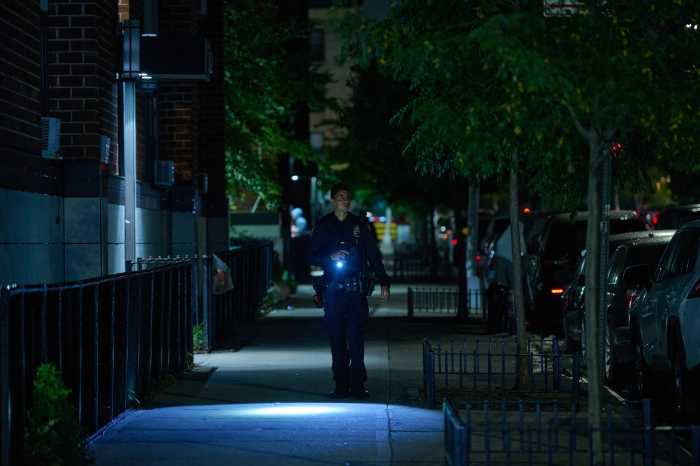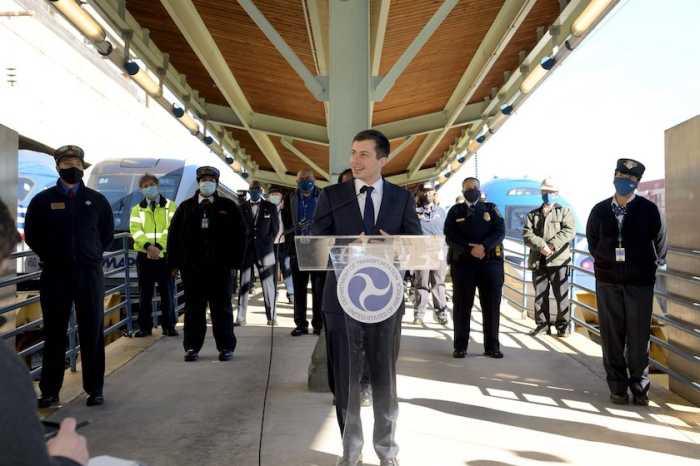A proposed Ikea home furnishings mega-store in Red Hook would flood the
neighborhood with 20,000 more cars each Saturday, a number that would
force as many as 800 drivers to park along already crowded side streets,
according to a report by an independent traffic engineer.
The findings conflict with those revealed in an environmental impact statement
commissioned by Ikea in April, which reported that 14,000 cars would vie
for 1,400 parking spaces each Saturday.
“They low-balled all the numbers,” charged traffic consultant
Brian Ketcham, executive director of Community Consulting Services, the
company that conducted the new traffic study.
Ketcham said the inconsistencies are not the result of erroneous research
on the part of Sam Schwartz, a former city Transportation commissioner,
better known as “Gridlock Sam” for his newspaper advice column,
whose firm compiled traffic data for Ikea for an estimated $1.5 million.
“The name of the game in this is getting the project approved and
if you have to fake the numbers to do that then that’s what you do
— and everybody does it,” said Ketcham, who released his study
last month after compiling data from the Ikea in Elizabeth, N.J., in May.
He said his study was completed at a cost of $75,000.
Ikea hopes to construct a 346,000-square-foot store at the former New
York Shipyard site between Dwight and Columbia streets along the Erie
Basin. The plans, endorsed by Borough President Marty Markowitz, also
include more than 70,000 square feet of additional retail and restaurant
space along the waterfront.
Despite the growth over the past two decades of Ikea and its minimalist
furniture designs to 25 locations throughout the United States, the project
in Red Hook would be the company’s first in a truly urban setting.
For that reason, said Ketcham, engineers have relied on previously held
assumptions that most drivers would use major highway routes to get to
the store.
But because the Brooklyn-Queens Expressway and the Gowanus Expressway
are already at capacity, and because it is impossible to build a highway
ramp to the site, much of the new traffic will spill onto nearby roads,
most notably along Hamilton and Third avenues, said Ketcham.
Besides the influx of traffic on Saturdays, an average of 5,000 cars and
trucks will enter the area surrounding Ikea each weekday, according to
the Ketcham study. Ketcham estimated that each year there would be about
3 million car and truck trips to the site.
“The [Ikea draft environmental impact statement] assumes that nearly
60 percent of trips will be on those expressways because highways are
what Ikea-bound drivers use around the world, but they can’t in Brooklyn,”
said Ketcham. “They’re both at capacity for peak hours, and
that capacity will be especially limited on weekends as both roads face
decades of construction.”
Ikea officials say they will refashion the surrounding streets with traffic
signals at five intersections and perform a host of other traffic-calming
measures on numerous other corridors. Pat Smith, a spokesman for Ikea,
said those recommendations and plans to reevaluate traffic a year after
opening, should ensure that congestion won’t become an issue.
But Ketcham contends those concessions would not reverse the traffic influx,
which at its height will usher in about 60,000 car and truck trips each
week, he said.
“There’s no question that you’re going to get traffic not
just from Manhattan, but from portions of Queens and Long Island,”
said Ketcham, whose report finds that the store would draw customers within
an eight-mile radius. That means drivers from New Jersey and Long Island,
as well as the five boroughs, would likely find their way into Red Hook
each weekend.
In terms of traffic safety, Ketcham boldly predicted five deaths within
the first two years of the store’s opening, despite his own earlier
findings that indicated only one fatality for every two years. Based on
current accident rates in Brooklyn, he said, 57 more will be injured and
94 cars and trucks will be damaged each year.
“Within the first two years, I guarantee five children will get killed,”
said Ketcham. “I see how those kids play and I guarantee your going
to have a tragedy on your hands.”
Ketcham’s study also finds that the new traffic will result in an
additional 506 tons of carbon monoxide, 36 tons of hydrocarbons and 34
tons of nitrogen oxide, all of which will most heavily impact Red Hook
and Carroll Gardens residents and workers.






















